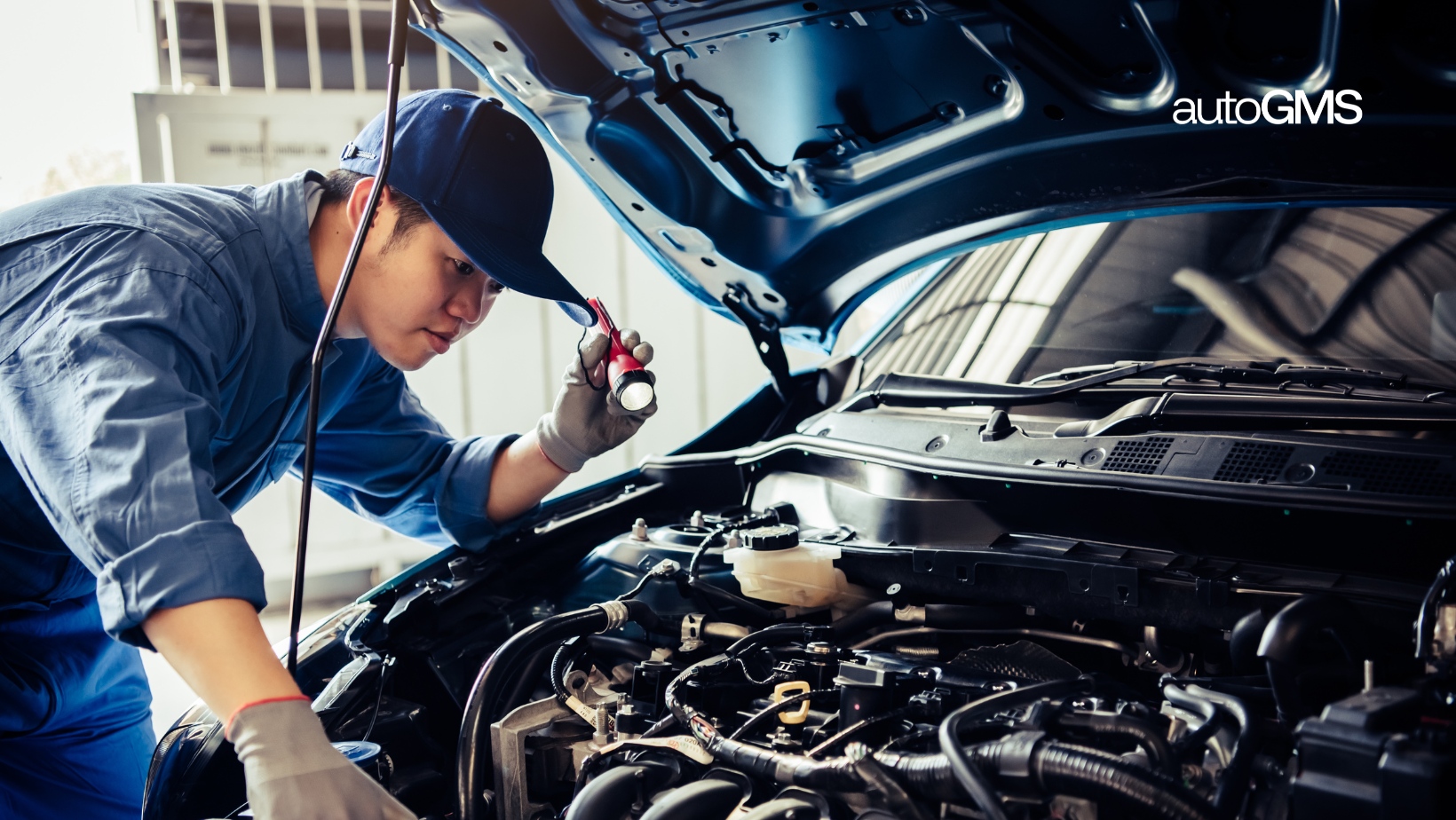R&I vs R&R: Key Differences in Repair Estimates (2025)
Confused about R&I vs R&R on your repair estimates? AutoGMS breaks down the meaning and impact for repair shops.
Introduction
When you get a car repair estimate, you might see terms like R&I and R&R listed. If you don’t know these auto repair estimate terms, it can be confusing. Learning what they mean helps you understand your repair costs, parts, and labor more clearly.
This guide explains R&I, R&R, and why they matter when reviewing your car repair estimates.
R&I Meaning in Auto Repair?
R&I stands for Remove and Install. In auto repair, this means a mechanic takes a part off your car to do a repair, and then puts the same part back on when the work is done.
R&I in car repair is common when a part is in the way but is still in good condition. Instead of replacing it, the shop carefully removes it, stores it safely during repairs, and reinstalls it once the job is complete.
Example of R&I:
- Removing a car door to fix internal damage to the window motor
- Taking off a bumper to access the radiator
- Detaching seats to reach damaged wiring underneath
Why R&I Matters:
- It saves you money since you're not paying for a new part
- It helps preserve original parts, which can be better quality than aftermarket replacements
- It ensures proper access for hidden repairs without unnecessary replacements
Understanding R&I helps you read your collision repair estimate terms more clearly and know exactly what you’re paying for.
What Does R&R Mean in Auto Repair?
R&R stands for Remove and Replace. In auto repair, R&R means a mechanic takes off a damaged part and installs a brand-new or refurbished one in its place. Unlike R&I, where the original part is reinstalled, R&R happens when the part is too damaged, unsafe, or costly to repair.
Understanding what R&R means in auto repair is key to knowing why some repairs are more expensive. Parts replacement usually includes both labor and the cost of the new part itself.
Example of R&R:
- Replacing a bent fender after a collision
- Installing a new windshield if the original is cracked beyond repair
- Swapping out damaged headlights or taillights
Why R&R Matters:
- It restores your vehicle's safety and original performance after serious damage
- It often carries a parts warranty, giving you extra protection
- It ensures critical systems like airbags, brakes, or structural parts meet safety standards
Seeing R&R automotive services on your car repair estimates tells you that a new part is being installed, not just repaired.

Why R&I and R&R Appear on Auto Repair Estimates
When you review your auto repair estimates, you’ll often see R&I and R&R listed separately. These terms help both customers and insurance companies understand the type of work being done on each part of the vehicle.
R&I in car repair is listed when a part needs to be temporarily removed to access the repair area. R&R in auto repair appears when a part must be replaced because it’s too damaged to reuse.
How It Affects the Estimate:
- Labor Costs: Both R&I and R&R involve labor. Removing and reinstalling a part takes time and is billed separately.
- Parts Costs: R&R also includes the price of a new part, which can significantly increase the total repair bill.
- Insurance Approvals: Insurance companies often require detailed repair estimates, and R&I or R&R descriptions justify why certain parts must be removed or replaced.
Understanding these collision repair estimate terms helps you see exactly where your money is going, and it builds trust between you and the shop handling your repairs.
Why Knowing These Terms Helps Car Owners
Understanding R&I and R&R meaning is more important than you might think. When you recognize these terms on your car repair estimates, you can better understand what the repair shop is doing and why certain repairs cost more.
Benefits for Car Owners:
- Avoid Confusion: Knowing what R&I and R&R mean helps you feel more confident when reviewing your estimate.
- Understand Costs: You can clearly see what you’re paying for whether it’s labor, parts, or both.
- Build Trust: Being informed helps you ask the right questions and makes it easier to trust that the shop is giving you a fair and transparent quote.
- Make Smart Decisions: When you know the difference between repairing and replacing, you can better decide what’s right for your vehicle and your budget.
Learning a few key auto repair estimate terms like R&I and R&R puts you in control of your car repair experience.
How Auto Repair Shops Manage R&I and R&R Tasks
Behind the scenes, managing R&I and R&R automotive jobs requires careful tracking. Every part removed, installed, or replaced must be recorded accurately to ensure correct billing, proper insurance reporting, and smooth workflow inside the shop.
How Shops Handle It:
- Detailed Job Documentation: Shops document every R&I and R&R task to justify labor charges and parts costs.
- Workflow Efficiency: Tracking parts removal and replacement helps avoid mistakes during complex repairs.
- Insurance Compliance: Insurers often require clear documentation showing which parts were installed, reinstalled, or replaced.
Today, many shops use auto repair shop software like MyAutoGMS to manage R&I and R&R tasks efficiently. A platform like this automates repair orders, labor tracking, and parts management making it easier for shops to stay organized and for customers to get clear, accurate estimates.
Conclusion
Understanding R&I and R&R helps you read your car repair estimates with confidence. You’ll know whether parts are being reinstalled or replaced and why that affects your costs.
For shop owners, using tools like MyAutoGMS makes managing R&I and R&R faster, easier, and more professional.
Frequently Asked Questions
Ready to Transform Your Workshop Operations?
Join 1000+ successful auto workshops using autoGMS to streamline operations, reduce no-shows, and boost revenue.
Related Articles
Continue reading with these related posts

